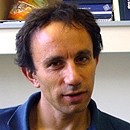Advisory Board and Editors Ecology

Teri Balser
Professor Teri Balser is Dean of Teaching and Learning for the Faculty of Science and Engineering at Curtin University, where she came after having been Dean of the College of Agricultural and Life Sciences at the University of Florida. She received a Ph.D. in soil microbiology came from the University of California at Berkeley, and she completed postdoctoral research in ecosystem ecology at Stanford University. She is a Fellow of the Soil Science Society of America, and was recently named to the Australian Research Council College of Experts.
Her research centers on understanding microbial community-level ecophysiological responses to stress, disturbance, and change, and the consequences of these for ecosystem functioning. She has worked in countries worldwide studying restoration, carbon sequestration, invasive species, biodiversity, and land use/land cover.
In addition to international recognition as an accomplished research scholar, Dr. Balser is widely known in higher education as a change agent and leader in Science, Technology Engineering and Math education (STEM). She is a co-founder of the Society for Advancement of Biology Education Research (SABER), a National Vision and Change Fellow with the Partnership for Undergraduate Life Sciences Education (PULSE), and was a Fulbright-Nehru Distinguished Chair to India in 2015 to help build capacity at the national level for pedagogically advanced and responsive STEM education.

Anastazia T Banaszak
Research Professor at the Unidad Académica de Sistemas Arrecifales (Reef Systems Academic Unit) a campus of the Universidad Nacional Autonoma de México located in Puerto Morelos in the Mexican Caribbean. Her undergraduate education was at James Cook University, Townsville, Australia followed by her graduate degree at the University of California at Santa Barbara, USA and a postdoctoral appointment at the Smithsonian Environmental Research Center, Maryland, USA.
Her research interests include the photobiology of phytoplankton, corals and coral reef dwelling-organisms as well as coral reproductive biology and ecology. Most recently, she has become involved in research on best practices for culturing coral species for use in restoration projects.
She is a topic editor for Coral Reefs, council member of the International Society for Reef Studies and serves on the scientific advisory boards for the Healthy Reefs Initiative and SECORE International and is on the steering committees of the Coral Restoration Consortium and the Meso-American Reef Restoration Group.

Ugo Bastolla
I got my PhD in Physics at Rome University, working with Luca Peliti and Giorgio Parisi on biologically inspired problems: evolutionary models and Boolean networks. Since then, I have always been interested in computational biology: Protein folding, Stability and population biology constraints in protein evolution, Conformation changes in proteins, Structural evolution of proteins, Theoretical ecology, Ecological interactions among microorganisms.

James Baxter-Gilbert
I am a Assistant Professor at Mount Allison University in Sackville, NB, Canada, where I teach a variety of biology and science communication courses. The central core of my research examines how anthropogenic landscapes and actions impact wildlife. Commonly my research examines how phenotypic change, triggered by urbanisation or biological invasion, may allow reptiles and amphibians the ability to meet the challenges of a human-dominated world.
I completed my BSc (Biology), GDip (Science Communication), and MSc (Biology) at Laurentian University. My MSc research examined: (1) the effectiveness of mitigation structures at reducing reptile road mortality while maintaining population connectivity and (2) developing techniques for evaluating chronic stress in reptiles relating to roads and traffic. I completed my PhD at Macquarie University, which examined how Australian Water Dragons were responding to anthropogenic habitats through urban-derived divergent phenotypes; testing behavioural, morphological, and physiology traits between urbanise and natural-living populations. I then when on to conduct postdoctoral research at Stellenbosch University in the Centre for Invasion Biology examining how biological invasion were impacting the behavioural, morphological, and physiology traits of Guttural Toads as they transition from native to invasive, and urban to natural habitats. My research now examine the interplay between urban evolutionary ecology and invasion science, using herpetofauna as a model system.

Brian L Beatty
Dr. Brian Beatty is a comparative anatomist, paleobiologist at New York Institute of Technology. He is especially interested in convergent/unique evolution of aquatic amniotes to similar physiological constraints, as well as surface metrology and its relationship to underlying microstructure of bone, skin, and endothelia.

Michael Beman
The overarching goal of my research program is to develop a predictive understanding of microbial ecology and biogeochemistry in the ‘Anthropocene’ sea. My research sits at the interface of microbial ecology, biogeochemistry, and global change science, and I work worldwide in reefs and estuaries, marine lakes and mountain lakes, and the open ocean. I focus on the responses of microbial communities, and the processes mediated by these communities, to environmental change—including climate change, ocean acidification, and ocean deoxygenation.
I received a B.S. from Yale University and a Ph.D. from Stanford in Geological and Environmental Sciences; before joining the UC Merced faculty in 2009, where I was a postdoc in Marine Environmental Biology at USC, a lecturer at UCLA, and an Assistant Researcher at the University of Hawai’i. I am an Associate Professor and member of the Sierra Nevada Research Institute and the Environmental Systems and Quantitative and Systems Biology graduate groups.

Mark C. Benfield
Professor in the Department of Oceanography and Coastal Sciences, College of the Coast and Environment at Louisiana State University. Adjunct (Guest Investigator) in the Biology Department at the Woods Hole Oceanographic Institution. Member and Past-Chair of the ICES Working Group on Zooplankton Ecology, member of the ICES Working Group on Integrated Morphological and Molecular Taxonomy, Director of the Gulf SERPENT Project. Ph.D. (Wildlife and Fisheries Sciences) from Texas A&M University.

Patrick Bergeron
Patrick Bergeron is an associate professor in the Department of Biological Sciences at Bishop's University
His research centers around questions about the ecology, physiology and evolution of vertebrates. Under this large umbrella, work is separated into three main projects, on
Chipmunks, Humans and Wood frogs.

Angelo F Bernardino
PhD in Biological Oceanography and Associate Professor of Oceanography at Universidade Federal do Espírito Santo, Brazil. Interested in Marine Biology, Marine Ecology, Deep-Sea Biology and Conservation, Estuarine ecology, Biological Oceanography, Climate change impacts on marine ecosystems.

Gorka Bidegain
Gorka Bidegain (GB) is a Senior Lecturer of the University of the Basque Country at the Department of Applied Mathematics. His main research interests lie within marine ecological and population dynamics modelling, including disease ecology and pathogen transmission. He conducts laboratory/field experiments and uses advanced mathematical and computational ecological modelling techniques to identify and asses the population and ecosystem responses to pressures and ecological and environmental heterogeneities. GB is developing new models, methodologies and algorithms with implications for the understanding of how climate variability interacts with marine populations and host-pathogen systems.
GB has participated in more than 20 national and international R&D competitive projects including three EU projects and three National Science Foundation (NSF). GB has published more than 25 articles in top rank peer reviewed journals, 3 book chapters, several scientific/technical reports and open access computer codes and Graphical User Interface for disease modelling (R, Matalab).
He is member of the Ecology of Infectious Marine Diseases Research Coordination Network (EIMD-RCN) (Cornell University, USA). He is also member of the Marine Biological Association and the Estuarine and Coastal Sciences Association

Rüdiger Bieler
Curator (research professor) in the Integrative Research Center, Field Museum of Natural History, Chicago and Member of the Committee on Evolutionary Biology, University of Chicago
Research interests include evolutionary systematics, biogeography, comparative morphology, and taxonomy, with special focus on marine Mollusca, especially Gastropoda and Bivalvia. As a “museum person,” he is particularly interested in the development and application of organismal, collections-based research, ranging from extensive new field surveys and large-scale specimen and data management issues, to the integration of morphological, paleontological, and molecular data to address biological research questions. He recently served as lead PI of the Bivalve Assembling-the-Tree-of-Life (BivAToL.org) effort and is involved in coral reef restoration projects and associated invertebrate surveys in the Florida Keys. Past offices include service as president of the American Malacological Society and of the International Society of Malacology (Unitas), and he currently a member of the steering committee of WoRMS (marinespecies.org) and a chief editor in the MolluscaBase.org effort.

Trine Bilde
Professor in Evolutionary Biology at the Department of Biology at Aarhus University in Denmark.

